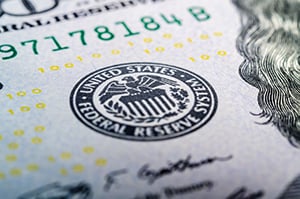 The other day, I wrote a post about how, with expectations very hawkish for the Fed, the thing to watch for in the latest Fed meeting was whether Chair Jay Powell managed to sneak in some hidden dovishness. He could have said, for example, that the Fed remains data dependent, suggesting that it would ease if the data improved. He could have said, for instance, that there were signs that inflation is moderating. He could have said a lot of things.
The other day, I wrote a post about how, with expectations very hawkish for the Fed, the thing to watch for in the latest Fed meeting was whether Chair Jay Powell managed to sneak in some hidden dovishness. He could have said, for example, that the Fed remains data dependent, suggesting that it would ease if the data improved. He could have said, for instance, that there were signs that inflation is moderating. He could have said a lot of things.
What he actually did say, however, was that the Fed is determined to keep hiking rates and to keeping rates high, until inflation is back down to 2 percent—which it does not expect until 2024 at the soonest, and probably 2025. He did say, unmistakably, that the Fed had to get inflation down despite the economic costs. He did say (not explicitly, but implicitly) that the Fed would stay the course even if we get a recession. And he did say the likeliest path to getting inflation down was to drive unemployment up significantly.
So much for dovishness.
The Real Takeaways
There are two real takeaways from this, and the second is the more worrying. The first is simply that the Fed is committed to getting inflation down to target levels, and this is neither a surprise nor especially newsworthy. This has been the message at least since Powell’s Jackson Hole speech. Indeed, he started yesterday’s press conference by stating that this message was the same as that from Jackson Hole.
No, the real surprise from yesterday is simply that the Fed now expects getting inflation down to be a multiyear project and that it expects a recession along the way, possibly a bad one. Powell explicitly said that the Fed doesn’t know how bad it will be—the expected growth and unemployment numbers are already bad—but it will persist regardless. The surprise is now that the Fed expects inflation to be higher for longer and, therefore, for interest rates to be higher for longer. That markets are wrong to expect cuts sometime next year. And, looking at the data, pretty much the whole board seems to be in agreement.
So much for dovishness.
The Market Reaction
Unsurprisingly, after having a night to digest this, markets are reacting. The yield on the U.S. Treasury 10-year note is up sharply, taking us back to pre-financial crisis levels for the first time since late 2009. Higher rates mean lower stock valuations, and markets are down across the board. Powell was right, in that his message was the same as at Jackson Hole, but even starker, and markets are reacting the same way.
This changes expectations going forward. The markets had been pricing in rate cuts next year, but if Powell is correct, that is unlikely. The markets have been pricing in a peak rate of around 4.5 percent, but that might not be enough. The future now looks much riskier from a monetary policy perspective than it did 48 hours ago.
No More Safety Net for Economy
It also looks riskier from an economic perspective. The major bright spot so far has been strong job growth, and the Fed now has that in its sights. Understandable—that is what is driving the excess demand that is keeping inflation high—but a bad sign for growth overall. And by saying that a recession will not necessarily loosen policy, the Fed has removed a safety net under the economy.
Back to the Future
So, the real message yesterday was not hawkishness—we knew that. The real message was that the Fed is now looking solely at inflation as its mandate. Jobs, economic growth, and markets may all have to be, and will be, sacrificed to getting inflation under control. The Greenspan/Bernanke/Yellen put is dead, and we are back to the future with Paul Volcker policies.
This will take some getting used to, and Powell and the board may not be able to keep it up. But for the moment, things really look to be different this time.


 Print
Print

